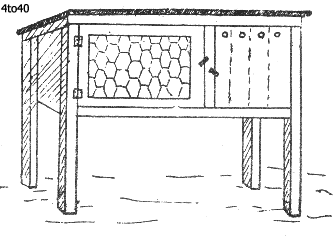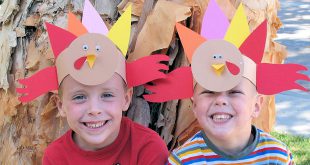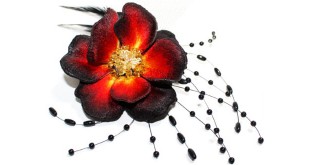
A Hutch for Small Pets
Most boys keep pets of some kind, and probably you are no exception to the rule. If you have rabbits, doves, guinea-pigs, or such-like creatures, you will know how important it is to house them well and comfortably. Here is a capital hutch which can be made easily. You will agree that it is just the thing you have wanted to construct for a long while.
The diagram gives you a good idea as to what you have to make. The legs are cut out of wood, two inches square in section. The front ones, which run from the ground to the roof, are five feet high, and the back ones four feet high. Three feet from the ground comes the floor of the hutch. Use two pieces of wood, two inches square and four or five feet long for the front line and the back line. Join one length to the two front uprights and the other to the two back uprights, at the right distance from the feet, by providing notched joints at each end.
With wood of the same section, join the two pairs of uprights at the top, parallel to the floor supports. You will then have two complete frames, one for the front and one for the back. Join these frames at the sides by fixing, at the top, two roof supports about three feet long and two inches square in section. Note that the back is lower than the front. This is to run off the rain water. The next step is to make the floor. Nail boards across from the front floor support to the back one.
The skeleton of the hutch is now complete. For the sake of economy use three-ply wood for the sides and back, but use deal boards for the roof, which should overhang at least six inches at the front. You now have to divide the hutch into two compartments- a day house and a sleeping apartment. These may be equal in dimensions, though it is preferable to give more space to the day run that to the bedroom. At any rate, the former should not exceed twice the space devoted to the latter.
The partition between the two compartments can be made of three-ply, if desired. In it cut a fair-sized hole, say eight by five inches, to act as doorway, and about an inch away from the vertical edges fix two upright wooden grooves to take a drop door. This can be actuated by a piece of string which runs through screw-eyes to a point outside the hutch. It is then a simple matter to open or close the door without disturbing the inmate.
The front of the hutch consists of two parts, both being fitted on a pair of hinges and serving as doors. The door of the day run is made of wood, two by one inch, in the shape of a frame, wire netting filling in the open space. The ends of the frame are connected by notched joints, three nails being sufficient to pin each lapped end of wood.
The door of the sleeping quarters is boards set together, side by side, two cross-pieces holding them in position on the face. Between these two doors you will have to fix an upright, joining the two horizontal strips fixed at the outset. It will be need no particular joint, but must fit tightly, and can be nailed both top and bottom.
The door of the sleeping quarters must have five or six holes bored in it, each one inch in diameter, for the sake of ventilation. Make them with a brace and bit. The roof of the hutch ought to be covered with a strip of tarred felt, and it will add to the comfort of the quarters if similar material is nailed round the three sides. Put the roof felt on last and see that the edges lap right over to the underside of the roof. Rain-water will then be kept from running into the hutch.
If you think of painting the hutch, do not turn your pets into their new quarters until the paint is dry and the smell has completely gone.
 Kids Portal For Parents India Kids Network
Kids Portal For Parents India Kids Network






